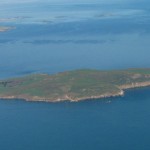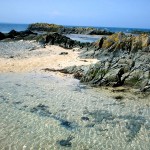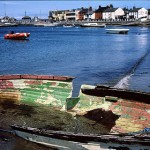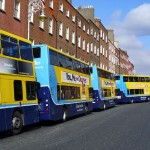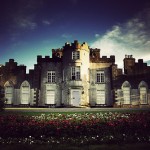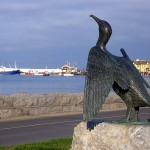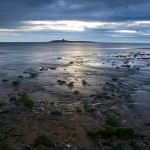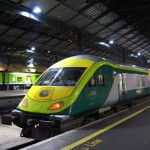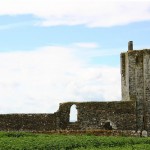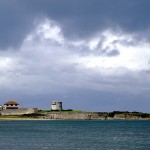History of St.Patricks Church
St. Patrick’s Church The present Catholic Church was consecrated in 1939 and dedicated to St. Patrick, the patron saint of Skerries and Ireland. It replaced an earlier one built on the Church Street side of the same site in 1832. A belfry, which had been added to the original church in 1834, was retained.
The Matthews family built this belfry from local Milverton limestone, and it acts as a bell tower for the Present Church. The West End of the Church and the belfry face onto Church Street. The building of the Church was started in 1935. Twenty-foot piles had to be driven into the sandy soil to give the Church a firm foundation. To adorn the front of the Church a carving of the St. Patrick’s was commissioned from Albert Power. He was a member of a local family and one of the foremost sculptors in Ireland at that time. In the original carving St. Patrick’s stood on a goat, but Skerries people objected to it, as it was a painful reminder that St. Patrick’s goat had been eaten by Skerries people. In the final carving St. Patrick stands on a Celtic scroll. However a plaque with a goat’s head has been added to the front of the Church in recent years. In the grounds of the Church is an old stone, inscribed Skerries National Scho(ol) 1834. This stone is possibly connected with the building that stands beside it, which was once a primary school.
In fact it housed Skerries first National Schools – a girls’ school upstairs and boys downstairs. The Carnegie Library Beside St.Patrick’s Church stands the Carnegie Library. It was built in 1910 and is the most ornate building, in Skerries. Originally it was to have been a plain building, but its builder James Duff, who was a local man, thought that it should have a façade worthy of the street. With this in mind he designed the present building and used limestone from Milverton to construct it. Andrew Carnegie was born to a poor family in Scotland in 1835. When he was 13 he emigrated to America with his parents. The following year he began work as a telegraph boy in Pittsburgh. Afterwards he worked for the railway.
He introduced sleeping cars to the trains and made a lot of money from this idea. He made more money by investing in the growing oil industry. Next he concerned himself with the development of the Pittsburgh iron and steel industries and he built a vast business empire. In 1901 he sold his business and he returned to live in Scotland. For the rest of his life he devoted his vast wealth to good works, notably the provision and equipping of libraries. He died in 1919.


